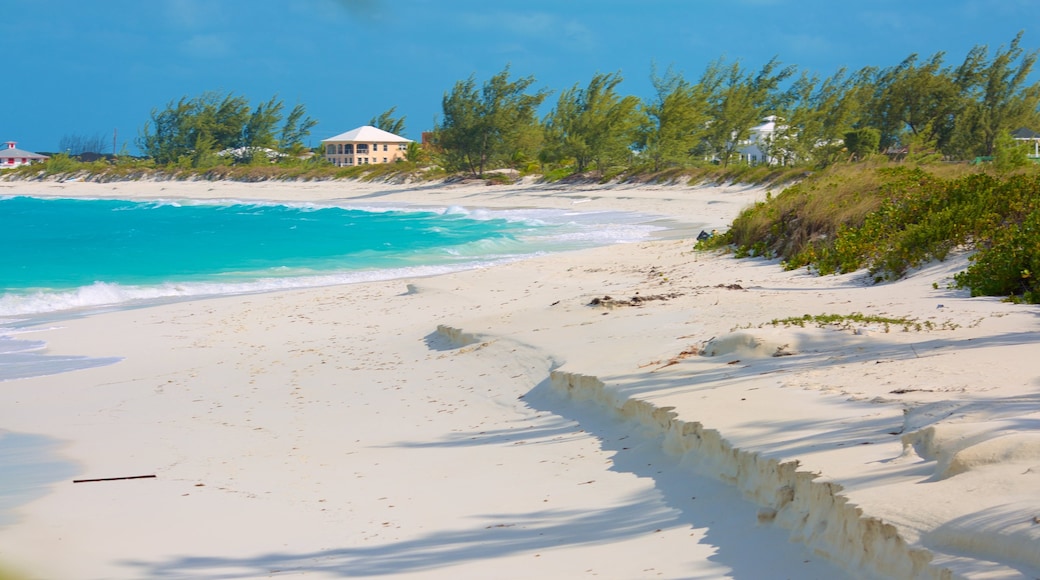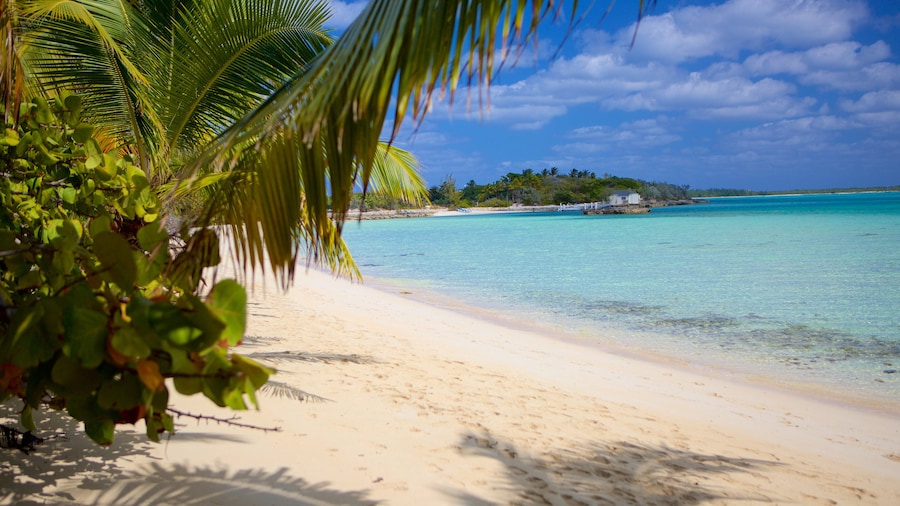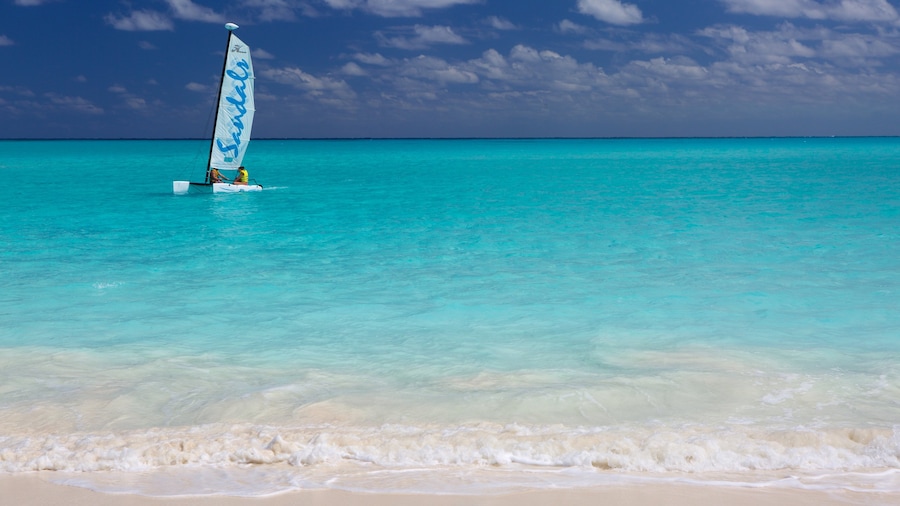The Tropic of Cancer Beach, also known as Pelican Beach, is the strip of sand that draws most travellers to the Exumas. The imaginary Tropic of Cancer meridian runs along a set of stairs leading down to the beach’s powdery sands. Because the beach is notoriously difficult to find, it remains quiet and tranquil despite its beauty. Bring a picnic and snorkeling gear and enjoy an afternoon of leisurely lounging on the sands.
Take a few photos of the Tropic of Cancer line, which has been painted onto the steps leading down to the beach. This imaginary line, which marks the northern boundary of the tropics at 23 degrees latitude, runs along the spot where the beach’s rough dunes meet its soft sands.
The longest beach on the island, its white sands stretch for more than 1 mile (0.6 kilometres) and border sapphire-colored waters. The beach has no amenities, so you’ll need to bring your own food, water and snorkeling gear. Enjoy the protected cove and its waters, which are usually quite calm, making it an excellent spot for swimming and snorkeling. The beach’s clear waters are filled with colourful fish.
Go for a walk, following the beach’s gentle curve along the coast of Moore Hill. Although the beach is known as one of the prettiest in the Bahamas, it’s not uncommon for its sands to be completely deserted. Lie back in the perfect sands and enjoy the tranquil atmosphere.
The Tropic of Cancer Beach is located in the eastern part of Little Exuma. It’s best to ask a local resident for directions once you cross over the one-lane bridge to Little Exuma from Great Exuma. There are no signs for the turn-off, but look for a telephone pole with blue reflectors at the spot where you should turn left. You’ll see a rocky road to follow down to the beach. Rent a vehicle suited for rough roads and drive carefully.






